Evenings in St Lucia have a certain rhythm. The air is warm, the sea hums just beyond the estuary, and somewhere along the coast, the first leatherback turtle hauls herself out of the surf. From the deck at Ingwenya Lodge, guests often watch the sky darken and know that, down the beach, one of the ocean’s oldest rituals is beginning.
What Animals Live in iSimangaliso Wetland Park?
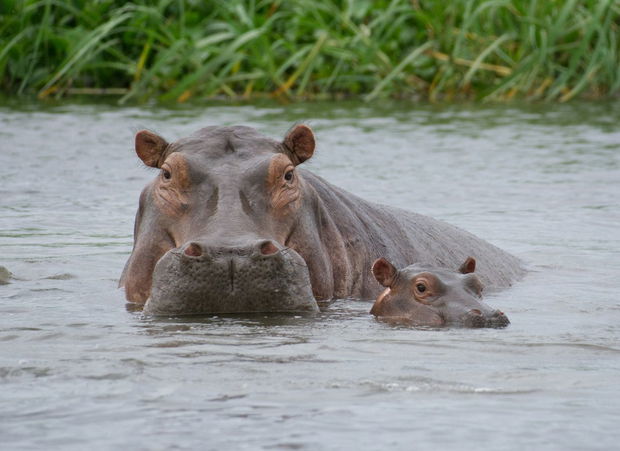
Imagine a place where hippos roam free, elephants graze quietly by the lakes, and rare birds soar over vast wetlands. That place is iSimangaliso Wetland Park, a UNESCO World Heritage Site located in the heart of South Africa's KwaZulu-Natal coast. It's not just a park; it's a sanctuary, home to over 6,500 species of plants and animals. With its complex mix of ecosystems, from wetlands and forests to savannas and coastal dunes, iSimangaliso boasts an extraordinary array of wildlife, making it a must-visit for nature lovers.
In this article, we'll explore the incredible variety of animals that call this park home. Whether you're planning a visit or just curious, let's dive into what makes iSimangaliso a wildlife paradise!
What Animals Live in iSimangaliso Wetland Park?
Imagine a place where hippos roam free, elephants graze quietly by the lakes, and rare birds soar over vast wetlands. That place is iSimangaliso Wetland Park, a UNESCO World Heritage Site located in the heart of South Africa's KwaZulu-Natal coast. It's not just a park; it's a sanctuary, home to over 6,500 species of plants and animals. With its complex mix of ecosystems, from wetlands and forests to savannas and coastal dunes, iSimangaliso boasts an extraordinary array of wildlife, making it a must-visit for nature lovers.
In this article, we'll explore the incredible variety of animals that call this park home. Whether you're planning a visit or just curious, let's dive into what makes iSimangaliso a wildlife paradise!
Overview of iSimangaliso Wetland Park
A Natural World Heritage Site
iSimangaliso is not just South Africa's first UNESCO World Heritage Site; it's also one of the most biodiverse areas on the planet. Situated on the southern edge of the Mozambique coastal plain, it covers over 220 kilometres of coastline. The park's name, which means "miracle" in Zulu, reflects its stunning natural beauty and ecological importance. From lush wetlands to coral reefs, its varied landscapes are home to a unique blend of African wildlife.
Unique Ecosystems
The park consists of five interlinked ecosystems: coastal dunes, wetlands, savannas, lakes, and forests. This diversity allows iSimangaliso to support a wide range of species. Whether it's freshwater fish navigating the estuaries or elephants wandering through the savanna, each ecosystem contributes to the park's rich tapestry of life. Let's take a closer look at the wildlife that makes iSimangaliso a special place.
Key Mammals Found in iSimangaliso
Large Mammals
Elephants
Elephants are one of the park's biggest draws. These gentle giants roam freely across the Western and Eastern Shores, often seen grazing near the water or making their way through the woodlands. The sight of an elephant silhouetted against the sunset is a quintessential iSimangaliso experience. It's not just about size; elephants play a crucial role in maintaining the park's ecosystem, helping to shape the landscape as they move.
Hippos and Crocodiles
If there's one animal synonymous with iSimangaliso, it's the hippo. The St Lucia Estuary is home to one of the largest populations of hippos in South Africa. Often seen wallowing in the water by day and grazing on land by night, these massive creatures are a must-see. Alongside them, you'll find the Nile Crocodile, lurking just below the water's surface, waiting to strike. The park has over 1,200 crocodiles, making it one of the best places in Africa to observe these ancient reptiles up close.
African Buffalos and Leopards
While iSimangaliso is not known for hosting the entire Big Five, it does have buffalos and leopards. Buffalos can be seen grazing in herds, especially in the Mkuze Game Reserve part of the park, while leopards, though elusive, are occasionally spotted during night drives. These predators add an exciting element of unpredictability to any safari.
Antelopes and Other Grazers
Rare and Common Antelopes
The park is a haven for antelopes, both common and rare. Kudu, Nyala, Waterbuck, and Red Duiker are just a few examples of the grazers you might see. The park also provides sanctuary to the endangered Suni, a small, shy antelope that thrives in the dense underbrush. The variety of habitats ensures that these animals have access to the resources they need, from lush grasses to water sources.
Marine and Coastal Animals
Marine Mammals: Dolphins and Whales
The marine life in iSimangaliso is just as impressive as what's on land. Cape Vidal, a popular part of the park, is a hotspot for dolphin sightings. Visitors can often see pods swimming playfully along the shoreline. From June to November, the waters off iSimangaliso come alive with the annual whale migration, offering visitors the chance to see humpback whales breaching and playing in the waves.
Nesting Sea Turtles: Endangered Loggerhead and Leatherback Turtles
One of the most magical experiences in iSimangaliso is witnessing sea turtles nesting on the beaches. From November to February, Loggerhead and Leatherback Turtles come ashore to lay their eggs, continuing a tradition that has been going on for thousands of years. Turtle tours allow visitors to observe this incredible process, where the mothers dig nests in the sand, lay their eggs, and return to the ocean.
Birds of iSimangaliso Wetland Park
A Bird Watcher's Paradise: Over 500 Species of Birds
With over 521 recorded bird species, iSimangaliso is a dream for bird watchers. From Fish Eagles and Flamingos to Narina Trogon, the park's diverse habitats make it one of the top birding destinations in South Africa. The wetlands, in particular, are an important breeding ground for waterfowl, including pelicans, herons, storks, and terns. During the summer months, migratory birds arrive, adding even more variety to the park's already rich avian life.
Rare and Endemic Birds
If you're lucky, you might spot some of the rarer species, such as the Southern Banded Snake Eagle or the Mangrove Kingfisher. The park's extensive wetlands and coastal forests provide a haven for these species, ensuring their continued survival. Popular bird-watching spots include Lake Sibaya and the quieter areas around False Bay.
Reptiles and Amphibians
Thriving Reptile Population: Nile Crocodiles and Snakes
Besides hippos, the park is famous for its Nile Crocodiles. With over 1,200 crocodiles in Lake St Lucia, it's an excellent place for observing these reptiles. You'll also find a variety of snake species, including the Southern African Python and the elusive Gaboon Adder. These snakes, though often feared, play an essential role in maintaining the balance of the park's ecosystems.
Amphibians in Wetlands: Frogs and Toads
The wetlands of iSimangaliso are alive with the sounds of frogs, especially after rain. From the Painted Reed Frog to the Bullfrog, these amphibians are an integral part of the ecosystem, helping to control insect populations. For those interested in smaller, often overlooked wildlife, a walk through the wetland areas can be incredibly rewarding.
Conservation Efforts and Challenges
Protecting Biodiversity
Conservation Initiatives
The park has made significant strides in protecting its wildlife. Initiatives include anti-poaching measures, alien plant removal, and restoration of natural water systems. By re-establishing connections between Lake St Lucia and the ocean, the park has seen a resurgence in fish populations, which benefits the entire ecosystem.
Current Threats
Climate Change, Water Use, and Poaching
However, the park is not without its challenges. Climate change, water management issues, and poaching continue to threaten the delicate balance of its ecosystems. While conservation efforts have been largely successful, ongoing vigilance is required to ensure the park remains a sanctuary for its diverse wildlife.
Exploring iSimangaliso: Best Areas for Wildlife Viewing
Key Areas to Visit
Cape Vidal and Eastern Shores
Cape Vidal is renowned for its coastal beauty and wildlife, making it a top destination for those looking to spot dolphins, hippos, and various antelopes. Whether you're snorkelling or driving through the park, there's always something to see.
Lake St Lucia
Take a boat cruise on Lake St Lucia to witness the park's famous hippos and crocodiles up close. These cruises offer a safe and relaxed way to view the wildlife, especially for those new to safaris.
Western Shores and Mkuze Game Reserve
For those keen on seeing larger mammals like elephants and buffalos, the Western Shores and Mkuze Game Reserve are must-visit spots. Guided safaris provide the best opportunities to encounter these animals in their natural habitat.
Activities to Experience Wildlife in iSimangaliso
Safari Tours and Guided Walks
Day and Night Drive Safaris
Experience the thrill of spotting leopards and bush babies during a night drive, or opt for a day safari to see the park's grazing animals in action.
Boat Cruises and Turtle Tours
Hippo and Croc Boat Cruises
Enjoy a relaxing boat cruise to see hippos lazing in the water and crocodiles basking on the banks. It's a unique way to get close to these iconic animals.
Turtle Tours
If you visit during turtle nesting season, don't miss the chance to join a turtle tour. Watch as these magnificent creatures lay their eggs under the moonlight—a truly unforgettable experience.
Bird Watching and Snorkelling
Top Spots for Bird Enthusiasts
Bring your binoculars and head to False Bay or Lake Sibaya for some of the best bird-watching opportunities in the park.
Explore Marine Life Through Snorkelling
Dive beneath the waves at Sodwana Bay to see the park's colourful marine life up close. From coral reefs to exotic fish, there's plenty to explore.
Conclusion
From the towering elephants to the tiny frogs, iSimangaliso Wetland Park is a celebration of life in all its forms. Its diverse ecosystems support a wealth of species, making it a must-see for anyone interested in wildlife. While the park faces challenges, the ongoing conservation efforts ensure that future generations can continue to enjoy its natural beauty. So, if you're wondering, "What animals live in iSimangaliso Wetland Park?", the answer is—more than you can imagine! Plan your visit and see for yourself why this place truly is a natural miracle.
Further Reading
Ingwenya Lodge is a family-run self-catering lodge on the outskirts of St Lucia, nestled against the iSimangaliso Wetland Park (South Africa's first UNESCO World Heritage Site). The lodge's six units each have fully equipped kitchens and modern comforts, and the property offers panoramic views of both the St Lucia estuary and the Indian Ocean. The setting is tranquil – hippos often graze on the lawns at night – giving guests a genuine...
When you book a self-catering lodge, sharing a braai is the last thing you want. At Ingwenya Lodge, every unit has its own private braai, giving guests space to relax and cook in their own time. Families like the peace of fenced gardens, couples enjoy the privacy, and groups gather on decks with sea views.


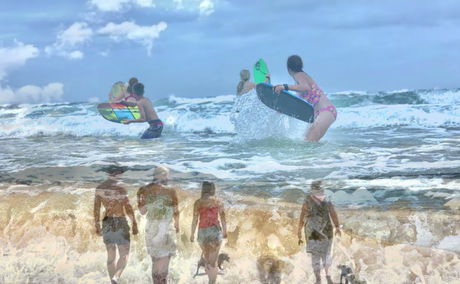
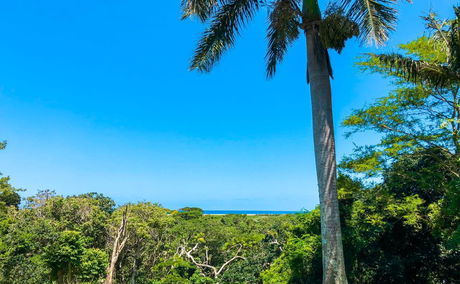
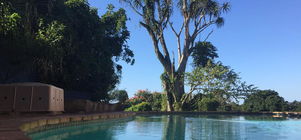

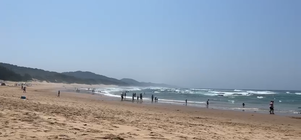
Share This Post